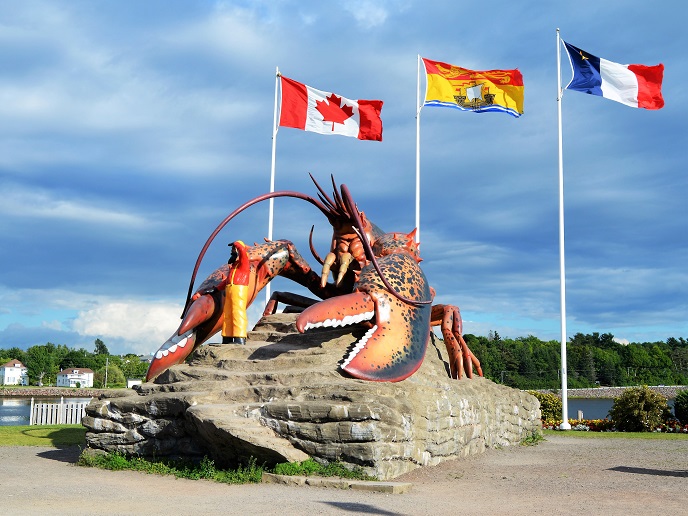Could we grow giant lobsters?
In Hollywood film, the list of creatures supersized to terrifying proportions is long. But perhaps the prime candidate that has so far scuttled under the production radar is the lobster. According to Drengstig, three characteristics of lobsters ought to put them front of the queue for the casting couch: “Firstly, they are highly cannibalistic. Secondly, they seem to have the potential to live indefinitely, showing little sign of ageing. And lastly, the natural limit on how big they can grow, is somewhat elastic!”
Fighting spirit
Once hatched, new-born lobsters enter their larval stage, floating close to the ocean surface for a few weeks. Here, they undergo three stages of moulting (or shell shedding), before dropping to the ocean bed to find a hiding place. “In the wild, only about 1 in 10 000 larvae survive to this ‘benthic’(opens in new window) stage,” says Drengstig. “While in land-based hatcheries, survival can reach 1 000–1 500 larvae. To increase survival in aquaculture, after a short period in upstream incubators, we transfer them into single rearing compartments.” This land-based farming system, developed during the EU-funded AUTOMARUS project, uses an advanced image processing system with an automated feeding system and robotic lobster handling. This not only provides high standards of animal welfare but also prevents territorial fighting, which can lead to death and even cannibalism. “Lobsters actually prey on their siblings from the moment they hatch, this has been the main barrier to commercial aquaculture in the past. When they are communally reared, we lose around 90 % of larvae from one mother due to cannibalism,” adds Drengstig.
Scalable production
To grow, lobsters moult – emerging from their old shells while absorbing seawater to increase their size. In the initial 5-7 years of their life, they can moult up to 25 times(opens in new window). By adulthood, they have typically reached a weight of around 400 grams and are 25 cm long. Each subsequent moult increases their length by about 15 %, and their weight by 40 %. To sustain this large growth, lobsters eat their old shells, recycling the calcium in their new shell. As we still lack a reliable means to age lobsters, no one really knows how old they can get. It has been speculated that they could reach close to 100 years, and a length of at least three feet. “As lobsters grow, they don’t retain physical indicators of their exact age, like otoliths (ear bones) in fish. If they die of old age and natural causes, it is normally because they can’t moult anymore – probably because of depleted energy,” explains Drengstig. So if the only thing stopping lobsters from reaching their massive potential is continued energy to moult, could this be engineered? Given that Drengstig specialises in artificial environments conducive to lobster growth, could these be tweaked to supersizing chambers? “We know that lobster growth is primarily regulated by water temperature, with the optimum temperature at 18-20 degrees centigrade. So, in principle you could grow giant lobsters in a controlled environment but it would take a very long time, many decades just for human size,” says Drengstig.
More scarce than scary
But rather than grow monster sea creatures, Drengstig’s work addresses a more prosaic aim. “In Norway, annual catches of around 1 000 tonnes started reducing during the 1960s to around 50 tonnes today(opens in new window), and though they are recovering, they remain well below previous levels,” he notes. Drengstig asserts that overfishing and illegal fishing make recovery difficult, spurred on by marketing and consumer habits. “European lobsters are preferred to other varieties, and despite consumers being more sustainability-aware, increased scarcity drives up demand. That’s why we produce portion-sized lobsters based on circular economy principles,” he adds. Having recently signed agreements with data centres to reuse their waste heat, Drengstig’s arrangement can now be upscaled based on a bit.ly/40vChdU (flow-through system). The team also release 10 % of farmed juveniles back into selected habitats to restore populations. Given it’s humans who are responsible for their depleted numbers, let’s hope no one makes a vengeful supersize lobster any time soon. Click here to find out more about Drengstig’s research: Novel Automated System for Farming of European Lobster



